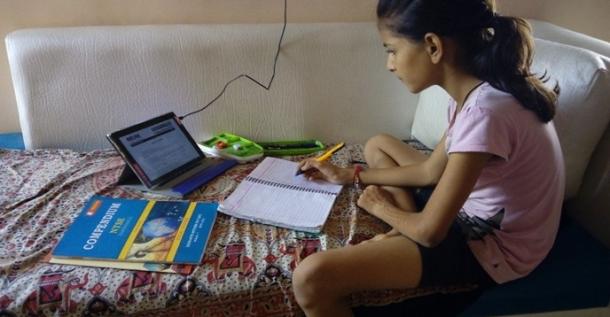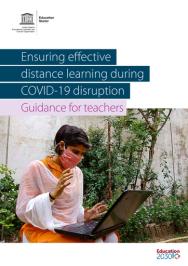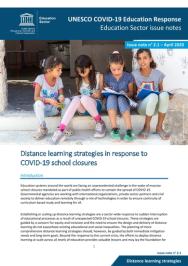Guidance on distance learning

School closures were mandated as part of public health efforts to contain the spread of COVID-19 from February 2020 in most countries. Education systems around the world are facing an unprecedented challenge. Governmental agencies are working with international organizations, private sector partners and civil society to deliver education remotely through a mix of technologies in order to ensure continuity of curriculum-based study and learning for all.
Supporting distance learning during COVID-19
UNESCO has been working to mitigate the impact of education disruption and school closures. In response to the pandemic, UNESCO has produced various distance learning resources to support teachers and policy-makers. The following resources offer best practices, innovative ideas and practical information.
UNESCO is supporting the organization of several workshops based on the publication Ensuring effective distance learning during COVID-19 disruption: guidance for teachers following a call for proposals that attracted almost 200 entries. The first workshop was held online on 20-21 October 2021, sponsored by the Faculty of Specific Education at Alexandria University in Egypt. Organized by Prof. Mona Sharaf Abdelgalil, the session was attended by 211 teachers from different educational departments, including 80% female teachers. The second set of workshops (six in-person, and one hybrid) took place in Zimbabwe from 5 to 24 November 2021, organized by Learning Factory and Mr Addi Mavengere. These workshops reached a total of 95 participants, including 67% female teachers, 64% from rural communities, and 1% with physical impairment. Six other pilot workshops were held in-person in Ethiopia by Mr Inku Fasil, targeting 120 teachers in Bahirdar, Addis Ababa and Adama from 13 November to 2 December 2021.


Case studies
10 recommendations to plan distance learning solutions
Decide on the use high-technology and low-technology solutions based on the reliability of local power supplies, internet connectivity, and digital skills of teachers and students. This could range through integrated digital learning platforms, video lessons, MOOCs, to broadcasting through radios and TVs.
Implement measures to ensure that students including those with disabilities or from low-income backgrounds have access to distance learning programmes, if only a limited number of them have access to digital devices. Consider temporarily decentralizing such devices from computer labs to families and support them with internet connectivity.
Assess data security when uploading data or educational resources to web spaces, as well as when sharing them with other organizations or individuals. Ensure that the use of applications and platforms does not violate students’ data privacy.
Mobilize available tools to connect schools, parents, teachers and students with each other. Create communities to ensure regular human interactions, enable social caring measures, and address possible psychosocial challenges that students may face when they are isolated.
Organize discussions with stakeholders to examine the possible duration of school closures and decide whether the distance learning programme should focus on teaching new knowledge or enhance students’ knowledge of prior lessons. Plan the schedule depending on the situation of the affected zones, level of studies, needs of students needs, and availability of parents. Choose the appropriate learning methodologies based on the status of school closures and home-based quarantines. Avoid learning methodologies that require face-to-face communication.
Organize brief training or orientation sessions for teachers and parents as well, if monitoring and facilitation are needed. Help teachers to prepare the basic settings such as solutions to the use of internet data if they are required to provide live streaming of lessons.
Blend tools or media that are available for most students, both for synchronous communication and lessons, and for asynchronous learning. Avoid overloading students and parents by asking them to download and test too many applications or platforms.
Define the rules with parents and students on distance learning. Design formative questions, tests, or exercises to monitor closely students’ learning process. Try to use tools to support submission of students’ feedback and avoid overloading parents by requesting them to scan and send students’ feedback.
Keep a coherent timing according to the level of the students’ self-regulation and metacognitive abilities especially for livestreaming classes. Preferably, the unit for primary school students should not be more than 20 minutes, and no longer than 40 minutes for secondary school students.
Create communities of teachers, parents and school managers to address sense of loneliness or helplessness, facilitate sharing of experience and discussion on coping strategies when facing learning difficulties.
National distance learning platforms and tools
A collection of national learning platforms and tools from Member States to facilitate the search for resources in one place.

